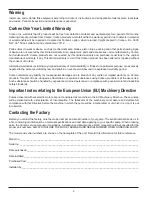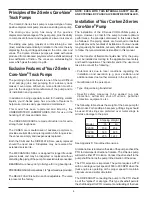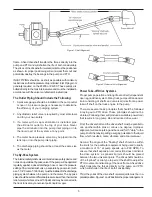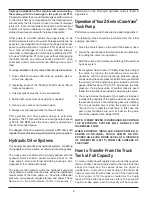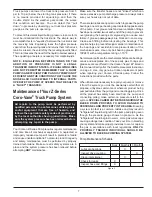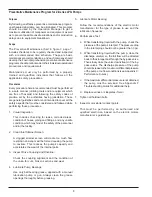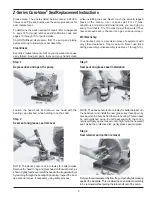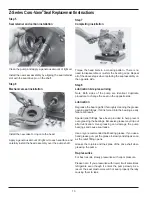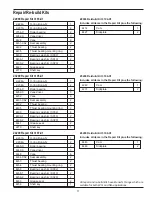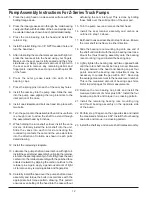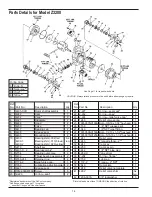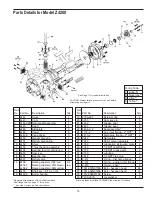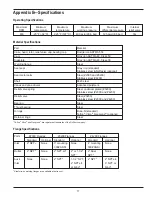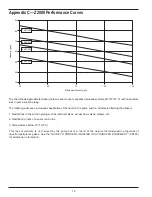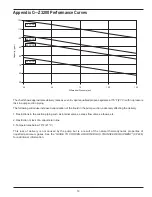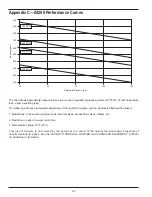
8
Preventative Maintenance Program for Z-Series LPG Pumps
Purpose
By following an effective preventive maintenance program,
unscheduled downtime can be eliminated. This program
should be used by the Operation Manager to get a
maximum utilization of manpower and equipment as well
as to prevent possible unsafe situations and/or production
delays due to equipment breakdown.
Scope
The Preventive Maintenance chart in figure 3, page 7,
includes the items to be regularly checked and inspected
with a recommended time schedule. These are basic
maintenance recommendations, and each company should
develop their own comprehensive preventive maintenance
program schedule, tailor-made to their individual operational
procedures and requirements.
Maintenance must only be performed by a properly
trained and qualified individual that follows all the
applicable safety procedures.
Procedures
Every procedure herein recommended must be performed
in a safe manner (utilizing tools and/or equipment which
are free of hazards) and following the safety codes of
practice set by the authorities having jurisdiction. These
are general guidelines and are not intended to cover all the
safety aspects that must be considered and followed while
performing these procedures.
1.
Visual Inspection:
This includes checking for leaks, corroded areas,
condition of hoses, piping and fittings, and any unsafe
condition which may hinder the safety of the personnel
and/or the facility.
2.
Clean Inlet Strainer Screen:
A clogged strainer screen will create too much flow
restriction and vapor will be formed causing the pump
to cavitate. This reduces the pump’s capacity and
accelerates the wear of the internal parts.
3.
Inspect Drive Coupling and Driveline:
Check the coupling alignment and the condition of
the union for cuts, broken sections and wear.
4.
Lubricate Pump Bearings:
Use only ball bearing grease, applied with a manual
lubrication pump or gun. Always clean the grease
openings thoroughly before greasing.
5.
Lubricate Motor Bearing:
Follow the recommendations of the electric motor
manufacturer for the type of grease to use and the
lubrication frequency.
6.
Performance Test:
a.
While transferring liquid with the pump, check the
pressure at the pump’s inlet port. The pressure drop
in the inlet piping should not be greater than 3 psi.
b.
While transferring liquid with the pump, close the
discharge valve(s) so the full flow will be directed
back to the storage tank through the by-pass valve.
Then slowly close the valve downstream of the by-
pass valves. The discharge pressure of the pump
should increase to the maximum differential pressure
of the pump at no flow conditions (see Appendix C:
Performance Curves).
c.
If the maximum differential pressure is not obtained,
the pump must be serviced. See Appendix F
Troubleshooting Guide for additional help.
d.
Replace vanes or sideplates if worn.
7.
Tighten all holdown bolts.
8.
Inspect motor starter contact points.
This must be performed by an authorized and
qualified electrician, based on the electric motors
manufacturer’s guidelines.
Summary of Contents for Corken Z-Series
Page 31: ......


